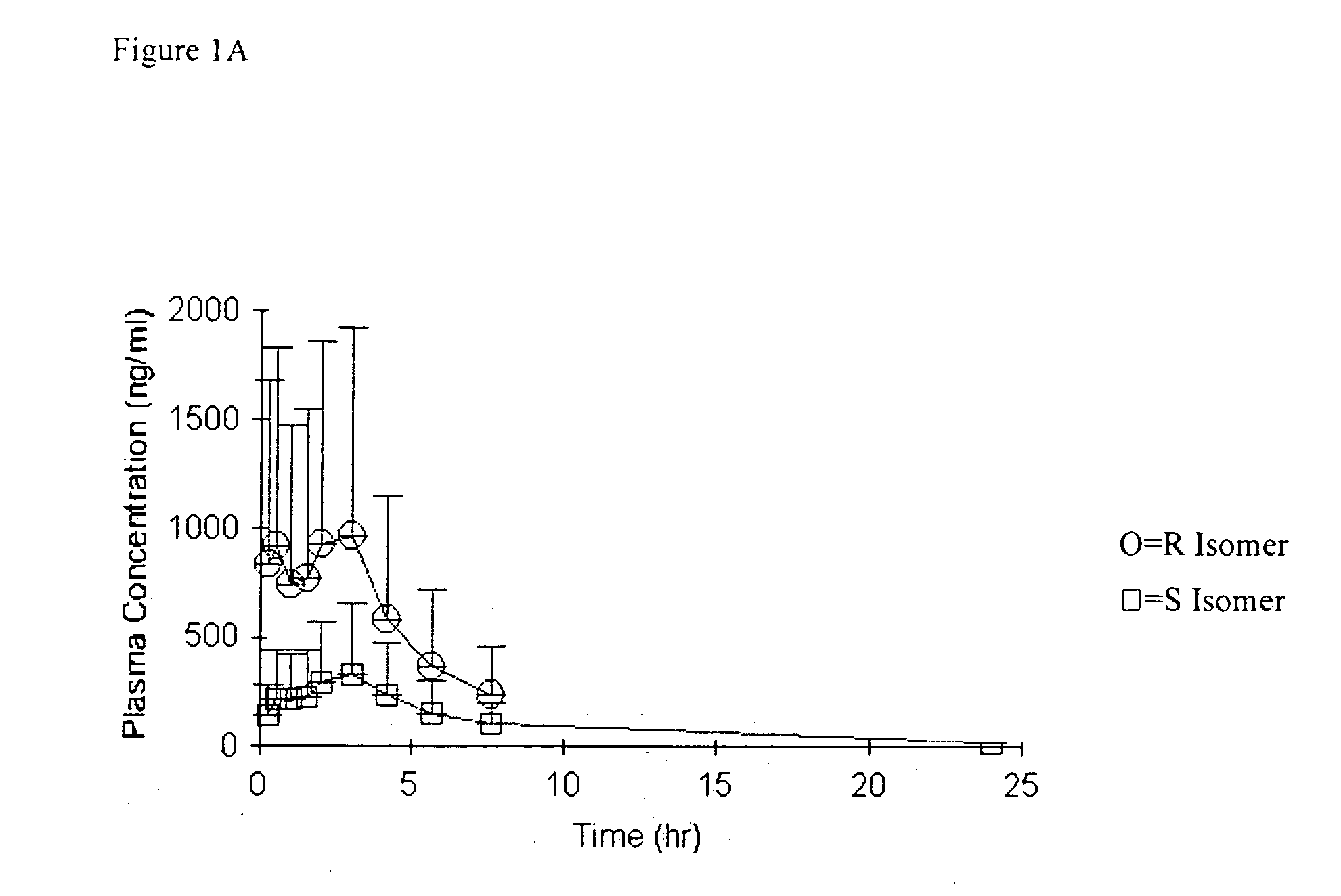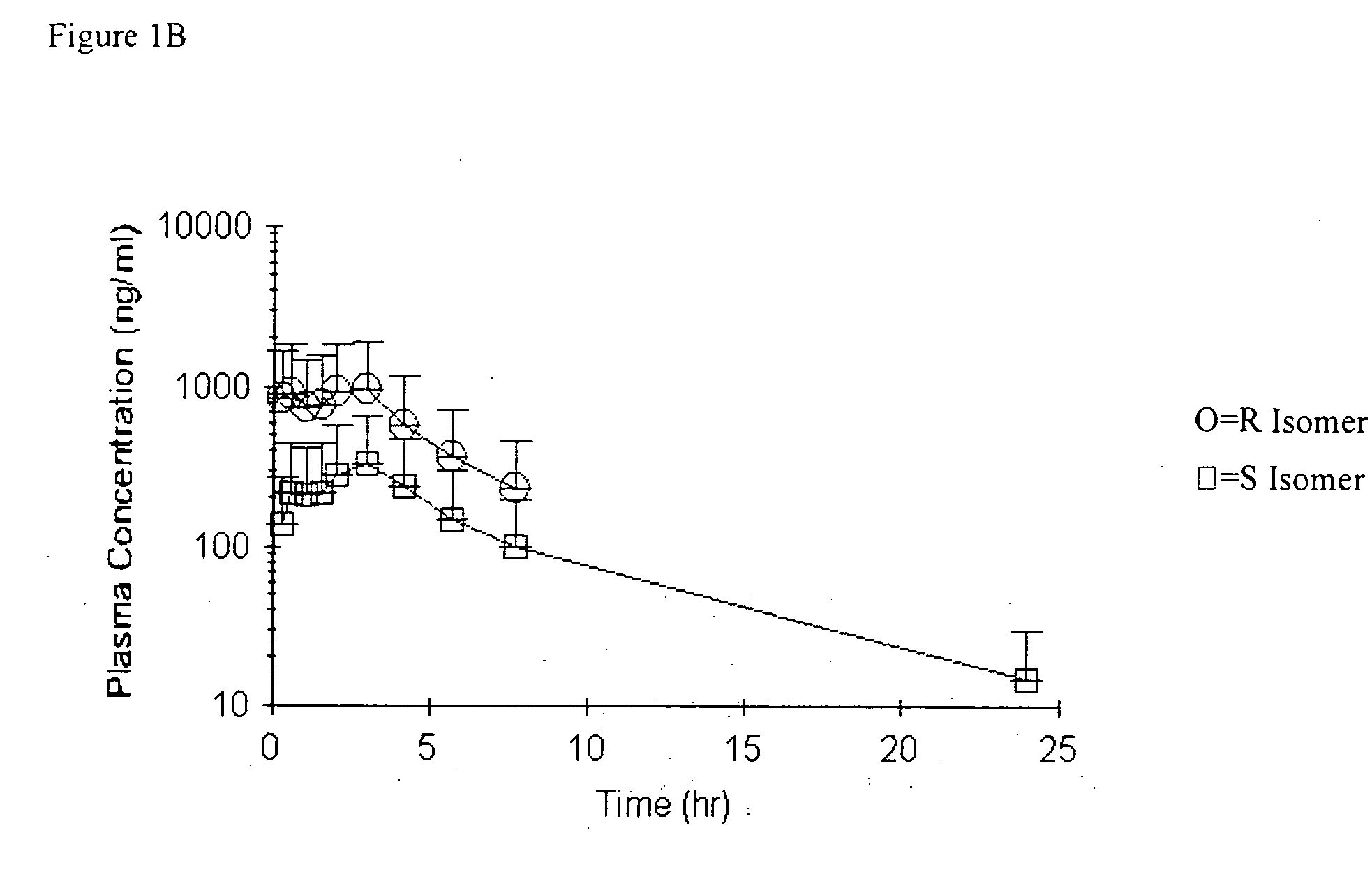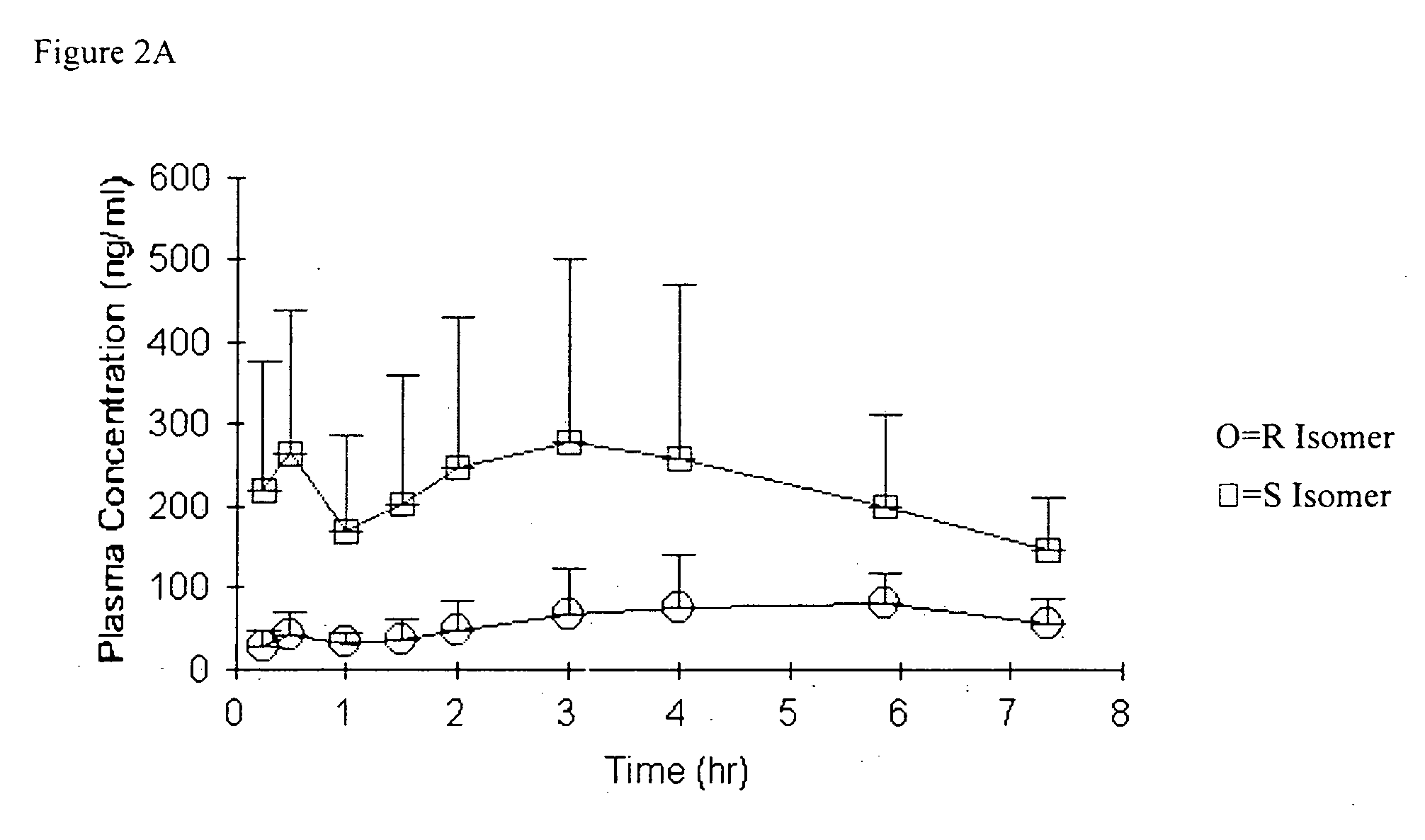Inhibitors of serine proteases
a serine protease and inhibitor technology, applied in the direction of chemical treatment enzyme inactivation, peptides, drug compositions, etc., can solve the problems of inability to broadly effective treatment of the debilitating progression of chronic hcv, inability to effectively prevent hcv, and significant side effects of interferons, etc., to achieve less risk of or severity, more bioavailability, and more bioavailability
- Summary
- Abstract
- Description
- Claims
- Application Information
AI Technical Summary
Benefits of technology
Problems solved by technology
Method used
Image
Examples
example 1
Bioavailability of R and S isomers at position C* of a compound of formula I
[0289] Three groups of male Sprague Dawley rats (n=6-7 / group) were orally administered a compound of formula I wherein the mixture comprised about 92% R isomer at position C* and about 8% S isomer at position C*; a mixture that was about 7% R isomer at position C* and about 93% S isomer at position C*; or a compound of formula I wherein the mixture was about 54% R isomer at position C* and about 46% S isomer at position C*; at a nominal dose of 30 mg / kg. Serial blood samples were collected up to 24 hours (hr) post dose. Derived plasma samples (100 μL) were acidified by the addition of 5 μL of formic acid to prevent in vitro interconversion.
[0290] The determination of concentrations of both the R isomer and the S isomer, at position C*, in plasma and in dose solutions was conducted using a chiral liquid chromatography / mass spectrometry (LC / MS / MS, e.g., LC / tandem mass spectroscopy) method. Compounds for oral...
example 2
[0313] HPLC Microbore method for separation of 5AB substrate and products
[0314] Substrate:
[0315] NH2-Glu-Asp-Val-Val-(alpha)Abu-Cys-Ser-Met-Ser-Tyr-COOH
[0316] A stock solution of 20 mM 5AB was made in DMSO w / 0.2M DTT. This was stored in aliquots at −20 C.
[0317] Buffer:
[0318] 50 mM HEPES, pH 7.8; 20% glycerol; 100 mM NaCl
[0319] Total assay volume was 100 μL.
X1Reagent(μL)conc. in assayBuffer86.5See above5 mM KK4A0.525μM1 M DTT0.55mMDMSO or inhibitor2.52.5%v / v50 μM tNS30.0525nM250 μM 5AB (initiate)2025μM
[0320] The buffer, KK4A, DTT, and tNS3 were combined; distributed 78 μL each into wells of 96 well plate. This was incubated at 30° C. for ≈5-10 min.
[0321] 2.5 μL of appropriate concentration of test compound was dissolved in DMSO (DMSO only for control) and added to each well. This was incubated at room temperature for 15 min.
[0322] Initiated reaction by addition of 20 μL of 250 μM 5AB substrate (25 μM concentration is equivalent or slightly lower th...
example 3
Fluorescence Peptide Cleavage Assays for HCV NS3 Protease
[0345] The steady-state inhibition constant, Ki*, of several compounds of formula I was determined in an assay that was modified slightly from a fluorescence peptide cleavage assay described in Taliani, M., E. Bianchi, F. Narjes, M. Fossatelli, A. Rubani, C. Steinkuhler, R. De Francesco, and A. Pessi. 1996. A Continuous Assay of Hepatitis C Virus Protease Based on Resonance Energy Transfer Depsipeptide Substrates. Anal. Biochem. 240:60-67; hereby incorporated by reference.
[0346] The assay was performed in a buffer containing 50 mM HEPES (pH 7.8), 100 mM NaCl, 20% glycerol, and 5 mM dithiothreitol (Buffer A), using the RET-S1 fluorescent peptide as substrate. Reactions were continuously monitored using an fMax fluorescence microtitre plate reader (Molecular Devices; Sunnyvale, Calif.) thermostatted at 30° C., with excitation and emission filters of 355 nm and 495 nm, respectively. A stock solution of HCV NS3 protease in Buffe...
PUM
| Property | Measurement | Unit |
|---|---|---|
| temperature | aaaaa | aaaaa |
| Structure | aaaaa | aaaaa |
| compositions | aaaaa | aaaaa |
Abstract
Description
Claims
Application Information
 Login to View More
Login to View More - R&D
- Intellectual Property
- Life Sciences
- Materials
- Tech Scout
- Unparalleled Data Quality
- Higher Quality Content
- 60% Fewer Hallucinations
Browse by: Latest US Patents, China's latest patents, Technical Efficacy Thesaurus, Application Domain, Technology Topic, Popular Technical Reports.
© 2025 PatSnap. All rights reserved.Legal|Privacy policy|Modern Slavery Act Transparency Statement|Sitemap|About US| Contact US: help@patsnap.com



